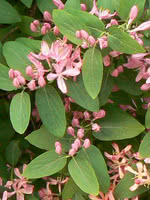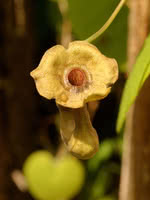Mon-Fri 9am - 5pm Mountain time
Twining Honeysuckle vs Dutchmans pipe
Lonicera dioica
Aristolochia macrophylla
CUSTOM GROW
NOT AVAILABLE THIS SEASON - MIGHT RETURN
Twining Honeysuckle is a vine native to the forests of Canada and the United States.
It can often be found winding up the bark of large trees or spreading out as a ground cover where no supports are present. You will love the attractive, yellow-orange flowers with pink centers which turn into red, inedible berries.
Consider Twining Honeysuckle when trying to achieve a natural, spreading, unkempt look for your garden.
The Dutchman’s Pipe is a fast growing, deciduous, woody, climbing vine. Featuring large heart-shaped leaves that overlap and often hide the flowers. The Dutchman’s Pipe namesake comes from the long yellow-green, brown or purple flowers that flare at the end, resembling Dutch smoking pipes.
The Dutchman’s Pipe will make a great screen or shade in your urban landscape, but does require support from a trellis or a fence. To control the growth, cut back in late winter.
Twining Honeysuckle Quick Facts
Dutchmans pipe Quick Facts
Toxicity: toxic/poisonous to people and animals

